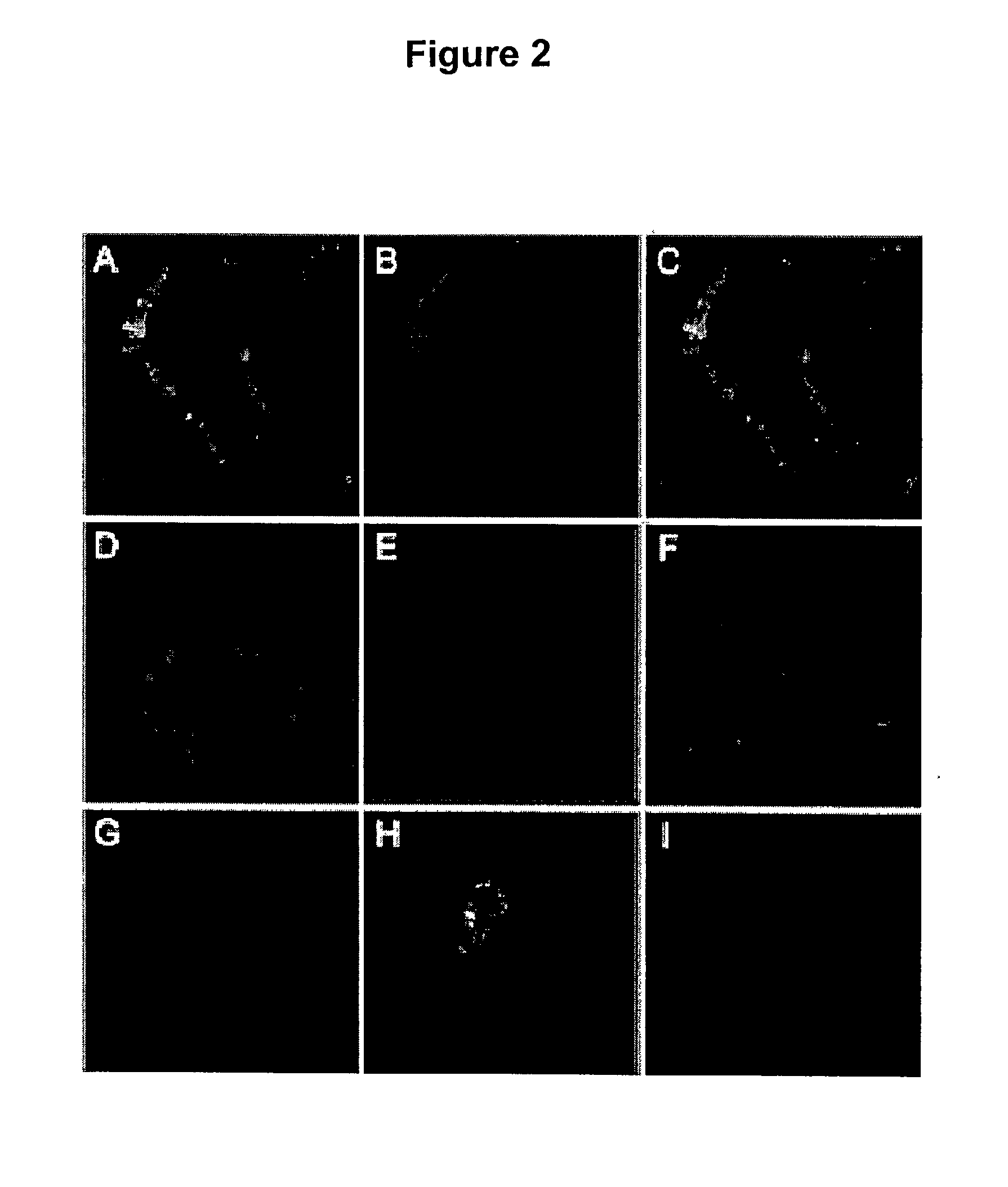Lipoprotein receptor
a technology of lipoprotein and receptor, which is applied in the field of lipoprotein receptor, can solve the problems of insufficient determination of the physiological role of apoe metabolism, increased risk of developing atherosclerosis, and increased death of patients with coronary heart disease and strok
- Summary
- Abstract
- Description
- Claims
- Application Information
AI Technical Summary
Problems solved by technology
Method used
Image
Examples
example 1
[0360] Purification and Identification of a High-Affinity HDL Receptor on Hepatocytes.
[0361] Immobilised free-apoA-I is used as a ligand and solubilised porcine liver plasma membrane proteins is used as starting material. First, surface plasmon resonance (Biacore) experiments indicate that interactions between solubilised porcine liver plasma membrane proteins and immobilized free-apoA-I are conserved with a high affinity dissociation constant (Kd.sup..about.10-9 M, FIG. 1B, sensogram 1). Using multiple rounds of binding-desorption of solubilised membrane proteins on the sensor chip, a high concentration of apo-AI affinity bound proteins (2.5 ng / .mu.l) are recovered. Using SDS / PAGE a 50 kDa protein (FIG. 1A, lane 3) is identified.
example 2
[0362] Improving the Recovery of the p50 Protein.
[0363] To improve the recovery of the p50 protein, free-apoA-I is immobilised on an affinity chromatography column (affigel 15--Bio-Rad), and using the same elution conditions as for the Biacore experiments, 4 main proteins are identified (FIG. 1A, lane 2) including the p50 in sufficient amount (50 pmole) to micro-sequence it. The eluted material is able to bind immobilised free-apoA-I (FIG. 1B, sensogram 2) with a relative increase of 4 fold as compared to crude solubilised homogenate (sensogram 1). Micro-sequencing is performed after protease digestion of the sliced-gel protein, HPLC separation and analysis by the Edman method. One peptide sequence derived from p50 is identical with a segment of the human .beta.-subunit of ATP synthase.
example 3
[0364] Cell Surface Localisation of the .beta.-Subunit of ATP Synthase and Binding of Free-apoA-I.
[0365] To demonstrate that the .beta.-subunit of ATP synthase is present on the hepatocyte cell surface, immunofluorescence microscopy is used with an anti .beta.-subunit monoclonal antibody. The presence of the .beta.-subunit of ATP synthase on the cell surface of Immortalised Human Hepatocytes (IHH) is confirmed (FIG. 2B). This protein is absent on the CHO cell surface (FIG. 2C), which correlates well with the absence of high-affinity binding sites in this cell line (data not shown). By contrast, a strong intracellular fluorescence is observed on permeabilised IHH (FIG. 2A) or CHO cells (not shown), reflecting the ATP synthase present in mitochondria. As a negative control, isotypic mouse IgG displayed no fluorescent signal indicating the specificity of the ATP synthase IgG response (FIGS. 2D, E, F). Following preincubation of cells with apoA-I, confocal immunofluorescence microscopy ...
PUM
 Login to View More
Login to View More Abstract
Description
Claims
Application Information
 Login to View More
Login to View More - R&D
- Intellectual Property
- Life Sciences
- Materials
- Tech Scout
- Unparalleled Data Quality
- Higher Quality Content
- 60% Fewer Hallucinations
Browse by: Latest US Patents, China's latest patents, Technical Efficacy Thesaurus, Application Domain, Technology Topic, Popular Technical Reports.
© 2025 PatSnap. All rights reserved.Legal|Privacy policy|Modern Slavery Act Transparency Statement|Sitemap|About US| Contact US: help@patsnap.com



